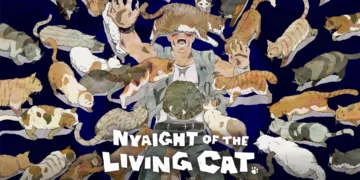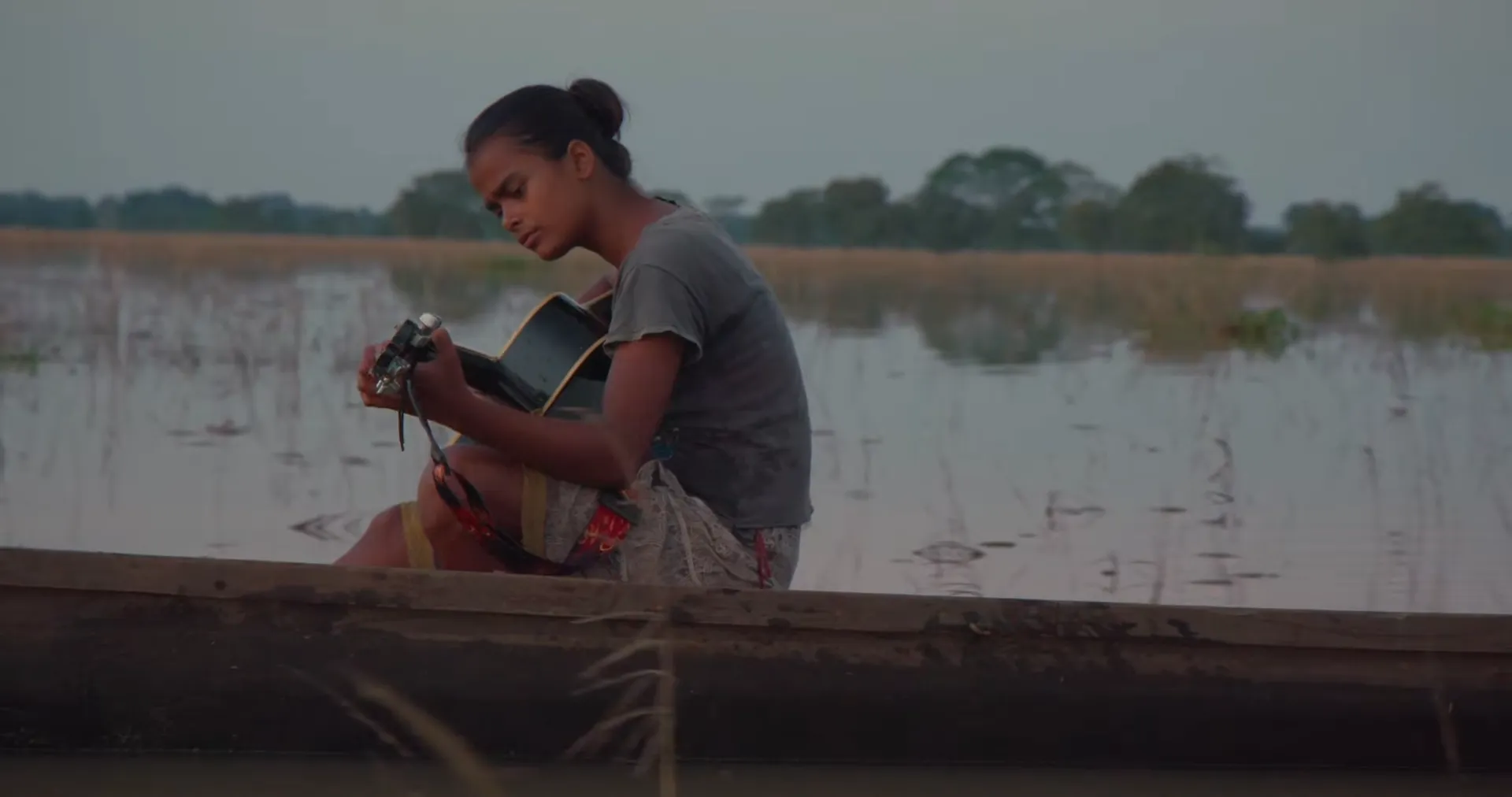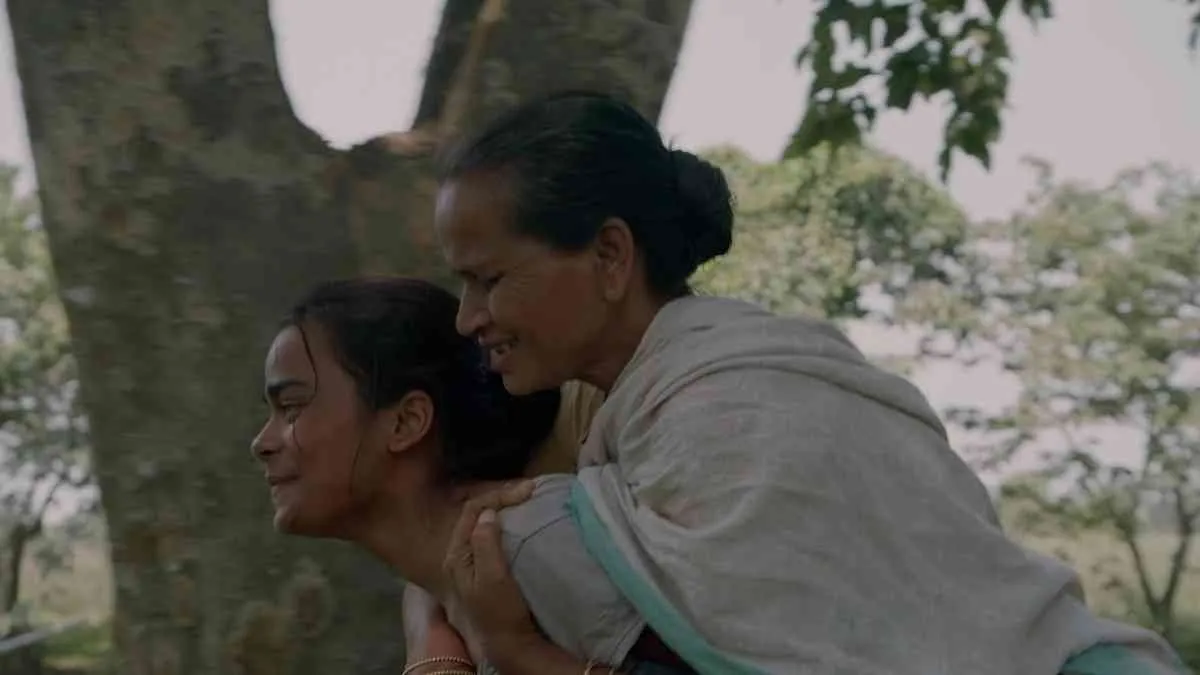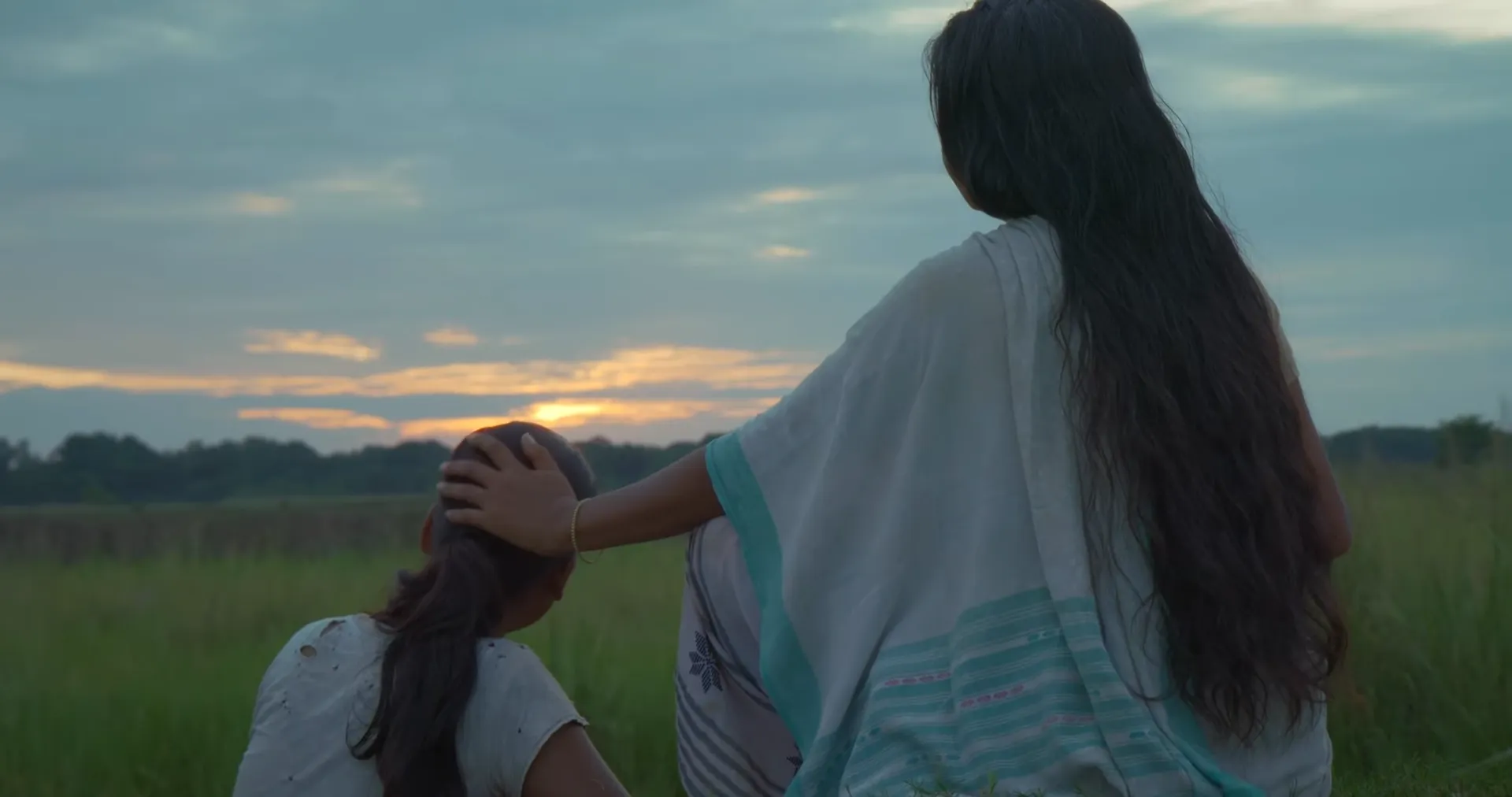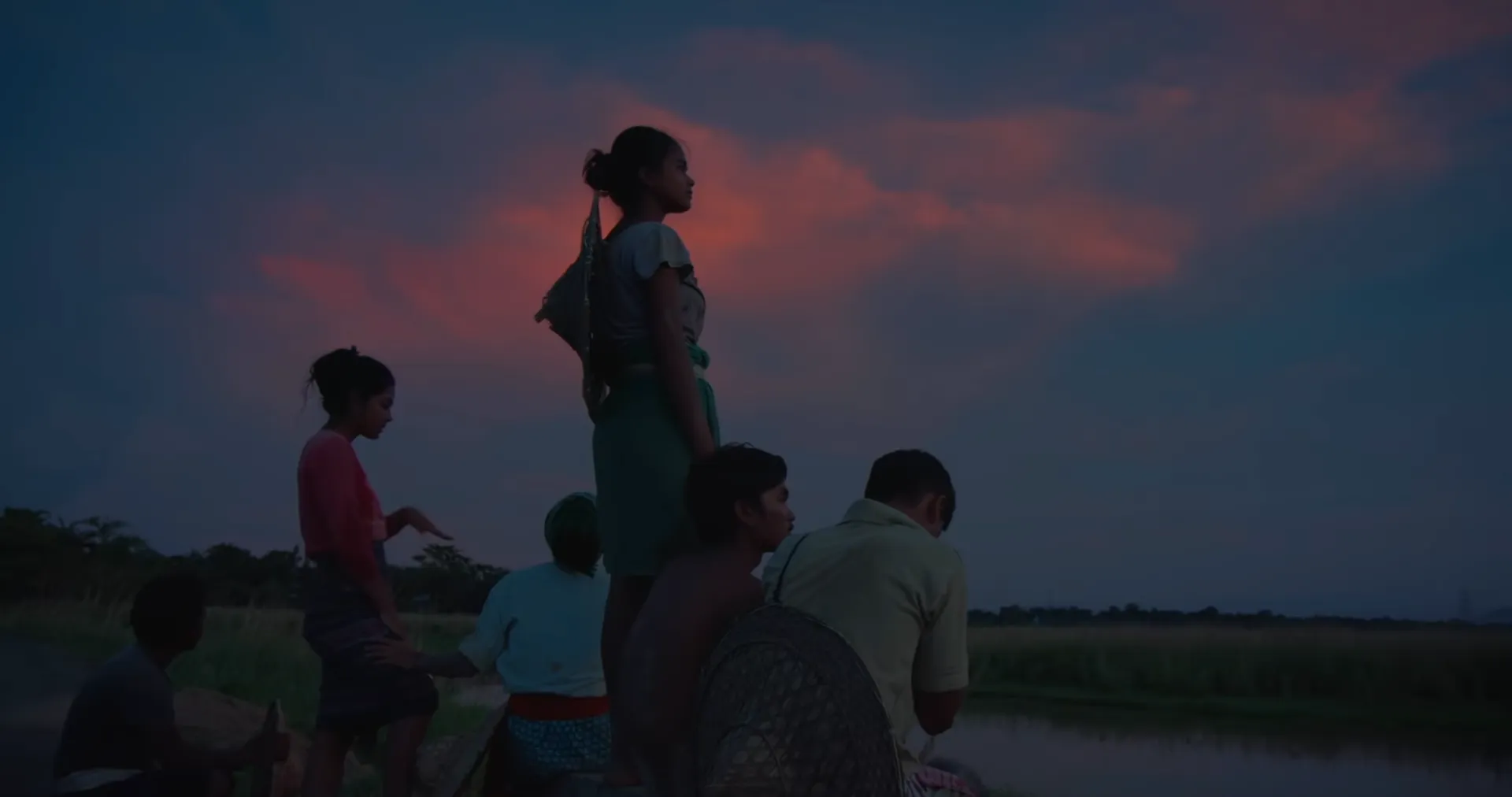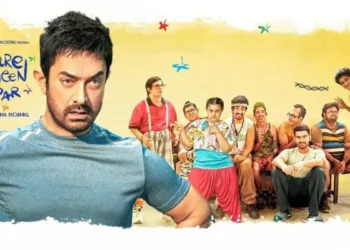In Village Rockstars 2, Dhunu is revealed not only as a character but also as a conduit for unfulfilled dreams and harsh reality. Now on the verge of adulthood, she navigates the choppy waters of aspiration and resignation, her youthful enthusiasm tempered by the weight of parental responsibility.
The guitar she once wished to play fades into obscurity, overwhelmed by the obligations of her dying mother and the relentless toil of country existence. Despite the growing shadows, her spirit flickers like a distant star’s light, illuminating her deep bond with her mother. This link, tender but loaded with unsaid concerns, encapsulates the essence of their existence—one painted with strokes of love and the unavoidability of loss.
Dhunu’s resilience is contrasted with her brother’s fall into alcoholism. His perilous path highlights the fragility of hope within the family unit as he alternates between selfish ambitions and the collapsing vestiges of their shared history.
The dramatic contrast between Dhunu’s loving inclinations and her brother’s self-destructive tendencies raises profound issues about the nature of familial relationships. Can love continue in the face of despair? The film asks us to ponder the darkest reaches of hope, how it can brighten or suffocate, bind, or unravel in this moving tapestry of human experience.
Dreams in the Dust: Aspirations and Reality
In Village Rockstars 2, the delicate dance between dreams and reality unfolds like a haunting tune, echoing the human spirit’s existential conflict. Dhunu’s desire to become a guitarist, once a lively aspiration, now remains like a ghost in the shadows of her daily work.
The colorful notes of her dreams contrast sharply with the bleak landscape of her life, which is distinguished by the relentless demands of farm labor and the oppressive expectations of a society that frequently values survival above self-actualization. Herein is the essence of her struggle: societal restraints weigh heavily on her, suffocating the vibrancy of her passions and throwing a cloud over her youthful zeal.
Despite this bleakness, moments of resilience arise, shining like rays of sunlight breaking through a stormy sky. Dhunu’s laughing with friends, brief moments of music and simple pleasures like climbing trees become acts of defiance against the looming despair. These occurrences not only soothe her weary spirit but also demonstrate the human ability for hope. Dhunu epitomizes the paradox of tenacity in her world, where dreams are sometimes dashed by the harsh realities of life, clinging to her aspirations even as the flood of circumstance threatens to sweep them away.
Her trip becomes a profound study of the nature of hope: a fragile yet tenacious energy that pulls one onward despite enormous circumstances. It raises the question of whether hope can flourish in a landscape devoid of promise. In this existential investigation, the film depicts the essence of human experience, where dreams are both a refuge and a cause of pain, illuminating the delicate tapestry of resilience that defines our common humanity.
The Lens of Existence: Cinematography and Direction
In Village Rockstars 2, Rima Das uses her camera not just as a tool but also as a philosophical window through which the complexities of existence are exposed. The cinematography, steeped in natural sceneries, serves as both backdrop and character—lush vegetation and flowing waterways become a profound metaphor for Dhunu’s interior struggles.
Each photo depicts the raw beauty of Assam while also reflecting a world on the verge of erosion, highlighting the fragility of dreams in the face of time’s relentless march. The movement of light and shadow across the fields creates a sense of duality, with moments of delight frequently counterbalanced by the specter of melancholy.
Das’ documentary-style filmmaking transports viewers into the intimate folds of rural life, presenting the raw reality of her characters’ existence. The audience may witness the ebb and flow of life as it naturally unfolds thanks to this observational style, which is rich in authenticity.
The editing choices—often abrupt but purposeful—echo the unpredictable nature of reality, emphasizing the idea that life is rarely linear or neatly packaged. While unsettling at times, this visual choice is consistent with the film’s existential themes, representing the turmoil that defines human experience.
As the camera lingers on Dhunu’s face, capturing transient feelings, it raises broader questions: What does it mean to live in a world that requires resilience? How does one find beauty in the midst of turmoil? The graphics not only enhance the emotional weight of the narrative but also serve as a meditation on the human condition, drawing us into a meditative zone where every frame echoes the longing, loss, and unwavering spark of hope.
Resonance of the Soul: Music and Cultural Context
In Village Rockstars 2, music serves as a lifeline for Dhunu, allowing her character and aspirations to be effectively depicted. Each note she plays expresses her longing for connection—not only to her dreams but to the very essence of her being.
The guitar, once a symbol of youthful ambition, today represents the bittersweet combination of hope and disillusion. Dhunu’s songs weave a tapestry of emotions as she strums, echoing the struggles and joys of her existence. In a society steeped in tradition, music becomes more than just entertainment; it becomes a cultural touchstone that brings people together by reflecting their common experiences and collective identity.
In the Assamese setting, music has a significant cultural significance that touches on resilience and communal cooperation issues. Traditional tunes and local rhythms serve as a reminder of the rich heritage that molds Dhunu’s world, providing peace amongst the looming darkness of reality.
However, this cultural fabric has flaws; as modernism spreads throughout Hamlet, the music becomes a frightening reminder of what is at stake. The songs she performs are charged with urgency, capturing the existential battle against a backdrop of change—where the past is revered, but the future is unknown.
Das’ representation of Assamese culture is authentic, capturing the vibrancy and intricacies of communal life with unwavering honesty. The exchanges between villagers imbued with warmth and familiarity, highlight the complexities of their relationships.
This authenticity is more than just a backdrop; it becomes an important aspect of Dhunu’s journey, reflecting the complexities of a civilization navigating the tides of progress. However, this representation has subtle tension, as external influences threaten to destroy the essence of their cultural identity. The film asks us to ponder the cost of progress—what is lost when the cacophony of modernity drowns out the rhythms of life?
Echoes of Sorrow: Emotional Resonance and Social Commentary
Village Rockstars 2 develops as a heartfelt exploration of emotional landscapes, with each scene imbued with a rich tapestry of emotion that resonates profoundly within the viewer’s subconscious. One of the film’s most distressing moments occurs when Dhunu confronts the reality of her mother’s worsening health.
This scene encapsulates the fragility of human connection in the face of time’s relentless march. The camera lingers on their shared eyes, showing a deep love mixed with an unsaid fear of loss.
This tender yet suffocating moment elicits empathy beyond observation, drawing us into their close bond. Such emotional depth is not just a narrative technique; it becomes a mirror reflecting our weaknesses, allowing us to grapple with the universal realities of love, sacrifice, and the looming specter of sadness.
However, the film’s emotional heart is inextricably linked to its harsh societal satire. A broader critique of her town’s systemic concerns is set against Dhunu’s struggle. The specter of climate change looms as relentless floods devastate the land, signifying the chaotic forces that endanger nature and humanity.
This environmental degradation plays an active role in the narrative, influencing the characters’ lives and choices rather than just serving as a backdrop. The film painfully depicts how such disasters intensify the already fragile existence of rural inhabitants when even a drop of rain might bring disaster.
Furthermore, the film attacks capitalism’s insidious expansion, which presents itself as opportunistic land brokers taking advantage of the desperate people. As Dhunu and her family grapple with the demands of a system that values business over people, this critique is flawlessly woven into the narrative.
The emotional toll of their struggles is exacerbated by these external factors, generating philosophical problems about agency and survival in a materialistic world. As the film illustrates the complicated interplay between human dreams and societal reality, it prompts us to consider the cost of progress—what compromises are made in the relentless quest for development, and who suffers the burden of such choices?
Village Rockstars 2 emerges as a striking monument to the human spirit’s resilience in the face of life’s storms, thanks to its delicate balance of emotion and critique.
A Tapestry of Resilience: Overall Impact and Recommendations
Village Rockstars 2 is a profound investigation of the human condition, weaving strands of aspiration, despair, and resilience against the backdrop of a shifting landscape. Rima Das creates a cinematic experience that goes beyond simple storytelling, becoming a meditation on the fragility of dreams in the face of the relentless stream of reality.
The film’s strength is its ability to elicit strong emotional responses, allowing viewers to enter Dhunu’s world and grapple with her struggles as if they were our own. Each scene exudes authenticity, capturing the essence of Assamese culture but also tackling larger existential themes regarding agency and survival.
The hauntingly stunning graphics and heartbreaking music accompaniment enhance the narrative impact, making the audience both a witness and a participant in Dhunu’s journey. This film forces us to confront painful truths about societal pressures, environmental deterioration, and the frequently grim outlook of rural life.
Village Rockstars 2 is highly recommended for those seeking a film that mixes artistry with a raw, unvarnished examination of life’s struggles. Its creative significance stems from its storytelling and its ability to elicit thoughts on our lives and the choices that create our futures.
The Review
Village Rockstars 2
Village Rockstars 2 explores dreams and realities, expertly balancing emotional depth and strong social critique. Rima Das's lyrical cinematography and accurate portrayal of Assamese culture evoke tremendous emotions, prompting meditation on resilience in the face of misfortune. The film's ability to elicit empathy and emphasize rural life's struggles against climate change and capitalism has a long-lasting influence. It forces spectators to confront the delicate balance between aspiration and despair, making it a must-see for anybody seeking creative value and genuine human insight.
PROS
- Powerful portrayal of human resilience and aspiration.
- Stunning visuals that enhance the narrative.
- Genuine representation of Assamese culture and community.
- Thought-provoking critique of climate change and capitalism.
- Music that resonates with the film's emotional core.
CONS
- Some scenes may feel prolonged or meandering.
- Certain messages might be too nuanced for casual viewers.
- Darker themes may not resonate with all audiences.

























